01-03 | Unqualified Sales Meetings: Choose Your Own Adventure
Series: Personalization in Practice, Presentations
In my previous article and part 2 of the series…
I expanded the topics from the first edition to highlight the significance of personalizing our PowerPoint slides to complement the sales discovery process. I distinguished between qualified and unqualified meetings and concentrated on how I prefer to facilitate discovery in qualified meetings using 2-3 slides that summarize the customer's business profile. In my experience, this method fosters a natural, customer-centric conversation and demonstrates thoughtful preparation and professionalism, which influences customers’ decision-making process.
This edition will focus on the more nuanced and challenging scenario of an unqualified sales meeting.
Before You Read On: My last post clarified that I am using the terms qualified and unqualified in a different context than how they are traditionally used at most technology sales organizations which is from the perspective of resource optimization, i.e., effectively and efficiently filtering out low-propensity-to-buy interactions.
This is because my objective is to use practical language and skills that empower us to differentiate more precisely between types of sales conversations, adapting our approaches, and producing more optimal customer outcomes. Most important is just that we recognize these scenarios when they present themselves and are competent in helping others understand how to meet the customer’s expectations.
Key Context
In an unqualified meeting, the customer relies heavily on the vendor to define a problem and/or opportunity for innovation and propose a solution.
A lack of information and high uncertainty make this type of selling scenario the most challenging for both parties. As the vendor, we bear the burden of risk as it is high exposure.
This is a true selling scenario. Most qualified sales scenarios involve competing for wallet share that the customer has already carved out. The question is just which vendor or technology they will spend it with. Our energy is directed toward answering that question: Spend it with my organization for X, Y, and Z reasons.
Unqualified presentations are thought leadership or vision-based selling, which are very different. They take us well upstream from where we most often sell. There are many reasons we are not in this position often. For one, as representatives of a specific technology, we are not strategy consultants, so most customers don’t turn to us for this type of insight. But every now and then, if we are doing a good job, we earn the opportunity.
Assuming we are selling technology into an established market, the most common set of circumstances that I personally have found myself preparing for this type of meeting is:
By Invitation (Customer-Led) - The customer is generally interested in innovation but doesn’t have a specific use case or problem in mind. I have often seen this when the customer invites a small handful of their technology partners to present (usually annually - “innovation days” or something similar) on areas where they can drive innovation in their execution strategy. This type of formal exercise is most common for large, complex enterprises. I have also participated in this type of meeting as the simple result of external pressures, such as competition or industry trends, which prompt customers to explore new technologies.
By my Request (Vendor-Led) - Solution-Focused or education-based outreach, or based on previous work that has established credibility, a C-level stakeholder and/or others in their sphere of influence accept a meeting for my team to present additional areas where we can impact or transform their execution strategy.
Whatever the pretense, we have a genuine opportunity to gain priority with executive stakeholders by influencing or transforming their execution strategy.
What does the above have to do with Personalization in Presentations? Well, this type of selling requires different approaches.
Let’s explore it by way of an example…
The Scenario
Given this most often occurs with existing customers with which we have an existing relationship. Let’s assume that is true of Wayne Enterprises and S2A.
I manage S2A’s global relationship with Wayne, but our engagement is limited in scope. Our executive champion, a VP, has endorsed S2A with the CIO for inclusion in a list of 5 vendors to present during a vendor innovation day. We will be included based on our executive champion’s influence and his growing confidence that we might have more to offer.
Our team will have 1 hour to present on additional areas in which we can drive innovation in their execution strategy.
The “Choose Your Own Adventure” Approach
In preparation for a meeting like this, it is important to establish an approach that will leave our audience feeling that their time was well spent and that we are a partner who can solve important challenges and don’t lose credibility even if our areas of focus are not a high enough priority for them to allocate resources (time and money to address in the short term).
If you work for an established outfit, this is typically an opportunity that justifies the involvement of executive-level field selling resources (Field CTOs, Vertical Strategists, Consultants, etc.) who can present based on their area of expertise, whether vertical or technology. Typically, their expertise involves both. When available, this is often a good approach, and I adhere to it.
Even with well-equipped and experienced executive-level resources, we are still running the meeting and are responsible for facilitating a positive outcome for both parties. In that spirit and that of the broader series focus on personalization, I will focus on how I structure and run these types of meetings, which often come down to running a PowerPoint deck.
The Presentation Structure
For thought leadership-oriented presentations, I strive to design a presentation structure and meeting format that does 4 things:
Provides Flexibility (Control): We should create an opportunity to pivot based on their input and priorities as we go.
Demonstrate Intimate Customer Knowledge: Use Concept Prototyping to illustrate what it looks like for the customer.
Elevates Our Brand Perception: After the presentation, the audience thinks, “I knew you did X, but didn’t realize you could do Y and Z.”
Establishes Credibility: The audience understands what good looks like for Y and Z and believes we can execute on them in a timely manner.
In this situation, my approach would look something like this:
I will open with my 3 of my 4-slides from my opening sequence (Title, Team, Agenda).
Section 1, after the agenda, will consist of two to three slides at most and will focus on the experience that gives us the authority to speak on the topics we will discuss. Then, I will introduce a slide listing the topics or “Areas of Impact or Interest” on which we are prepared to present our views.
The slide just before the “Areas of Impact or Interest” (Slide 3), I lead with a Key Takeaways Slide. What do I want them to take away from the hour with us.
I position it with the audience so that the topics can be presented chronologically as listed or as standalone topics in the order of the customs ’s choosing. This is the proverbial “Choose your Own Adventure” Approach.
This provides the customer with the flexibility I described as one of my goals above, eliminating the risk of preparing the singular narrative often sufficient in a qualified sales scenario.
From that prompt, you can expect 1 of 2 responses: “Let’s start from the top” or “Let’s start with Y and Z. " The relevant presenter can then take the reigns from that point. Your job as facilitator is largely done. May be except for closing etc.
Each topic should consist of only 1-2 slides, ideally just 1. Best case scenario is that the slide be a concept prototype slide illustrating how our technology underpins, aligns with, or transforms the customer’s existing operating or execution model. It’s an integrated vision illustrated through enterprise and technology architecture.
Concept Prototyping is explained more in the next section and contrasted with Customer-Specific Use Case Presentations.
But the long and short is: I’d aim for one slide to present a comprehensive vision of what good looks like. The right presenter can easily carry that message and associated discussion. It doesn’t require much more.
4 - 8 Topics Max, depending on my portfolio breadth & depth.
The objective is not to cover everything. We want to successfully isolate 2-3 topics of immediate interest, focus on them, establish credibility in our vision and ability to execute on the outcome, and mutually agree to follow up.
My Preferred Sequence
Here is what this looks like, with two examples of concept prototyping slides. Each has a different level of specificity.
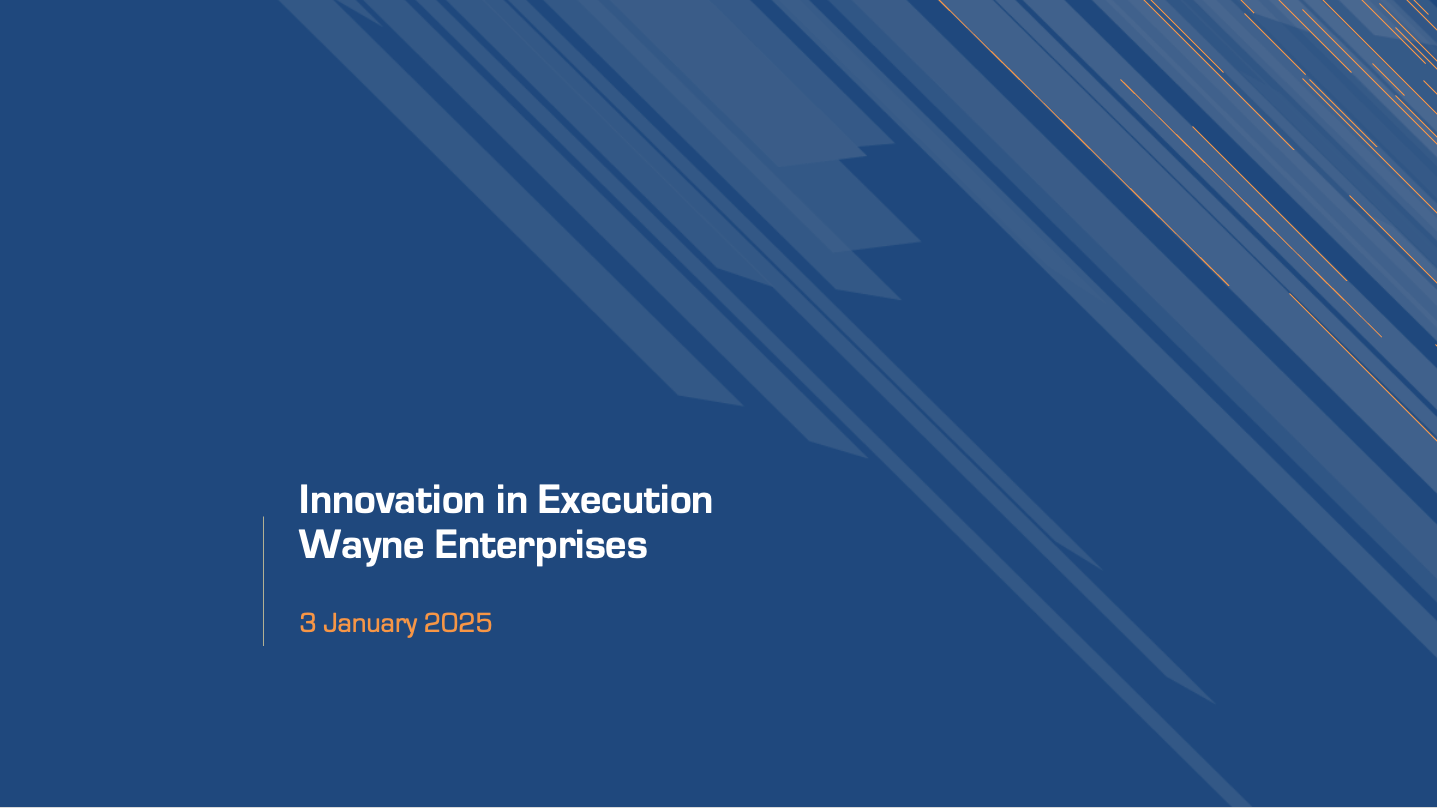
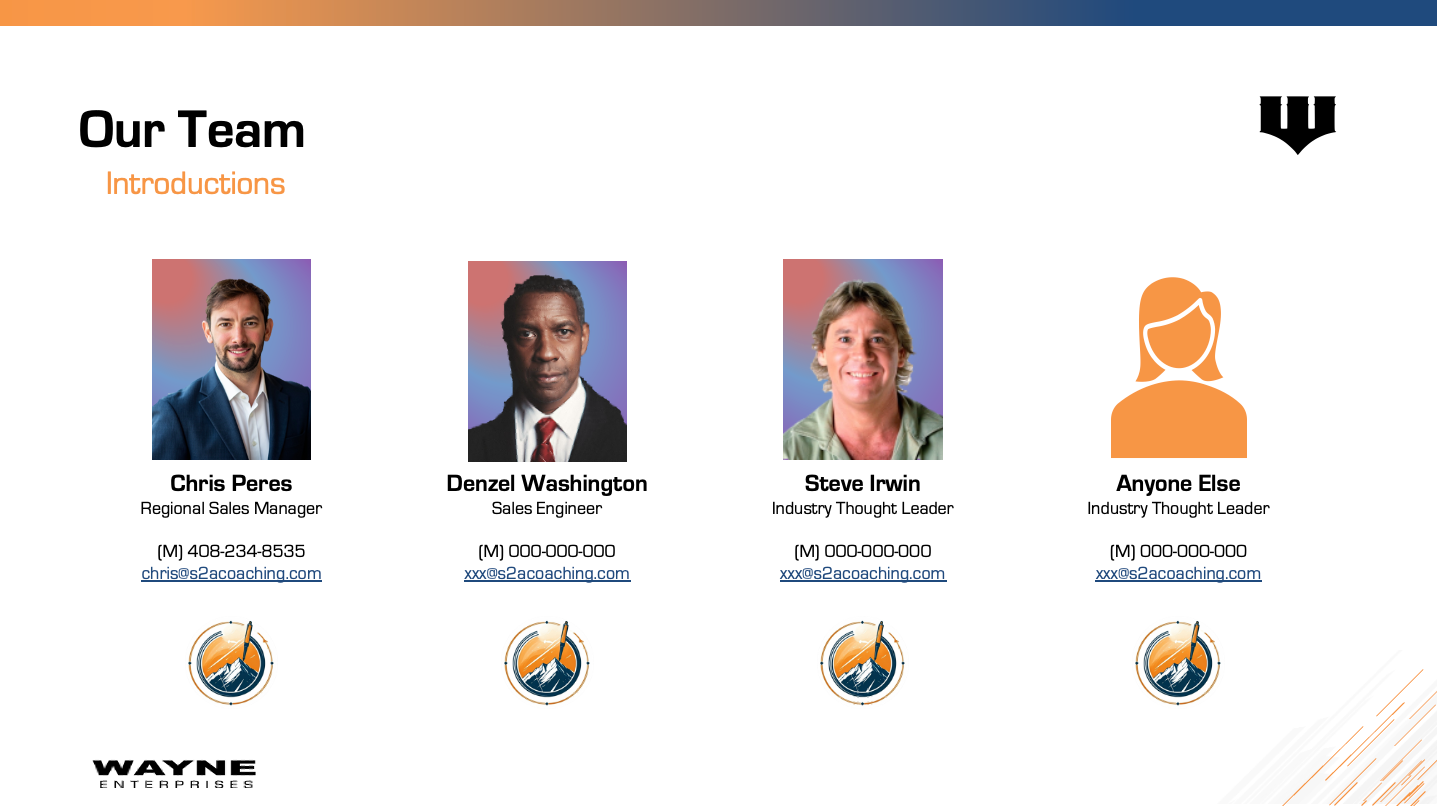

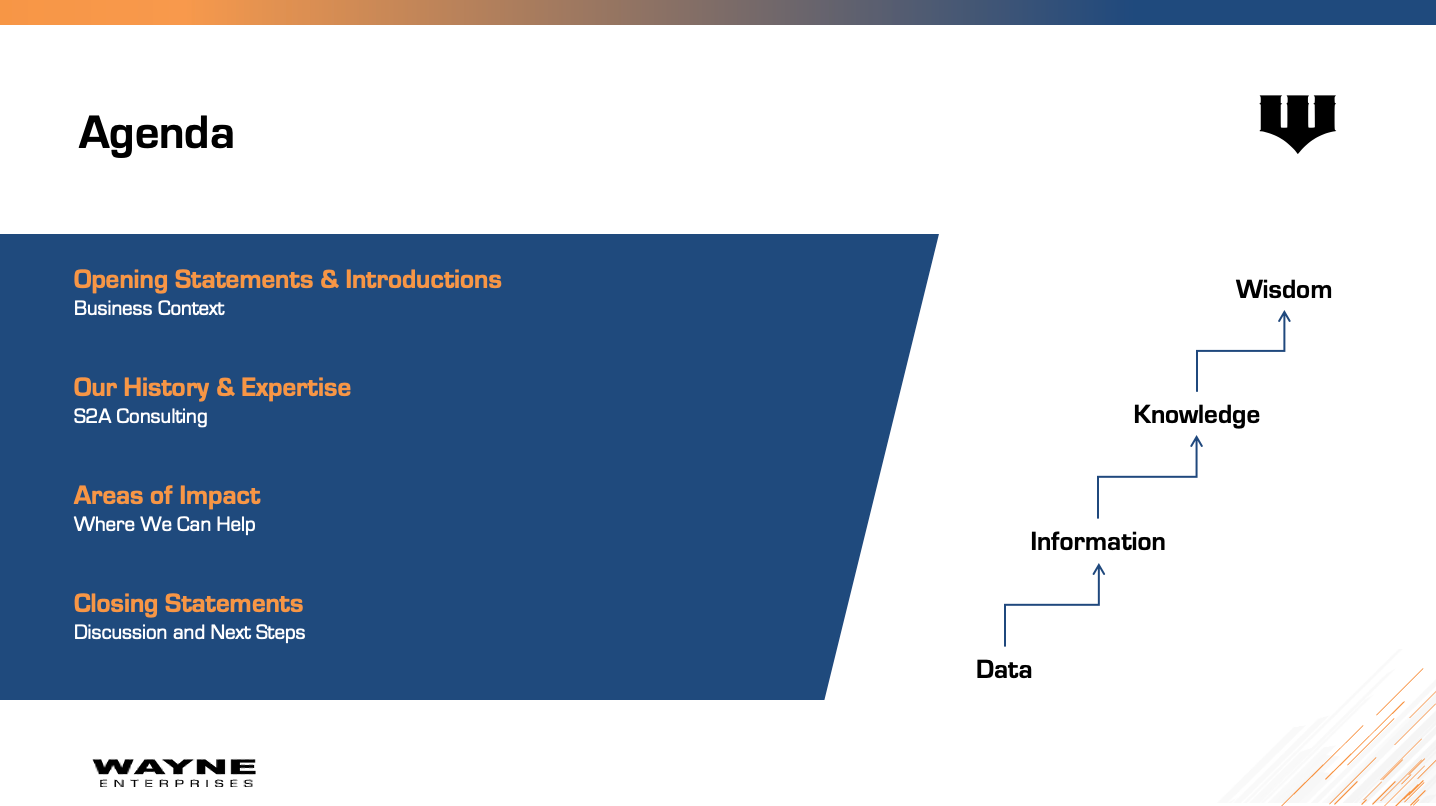



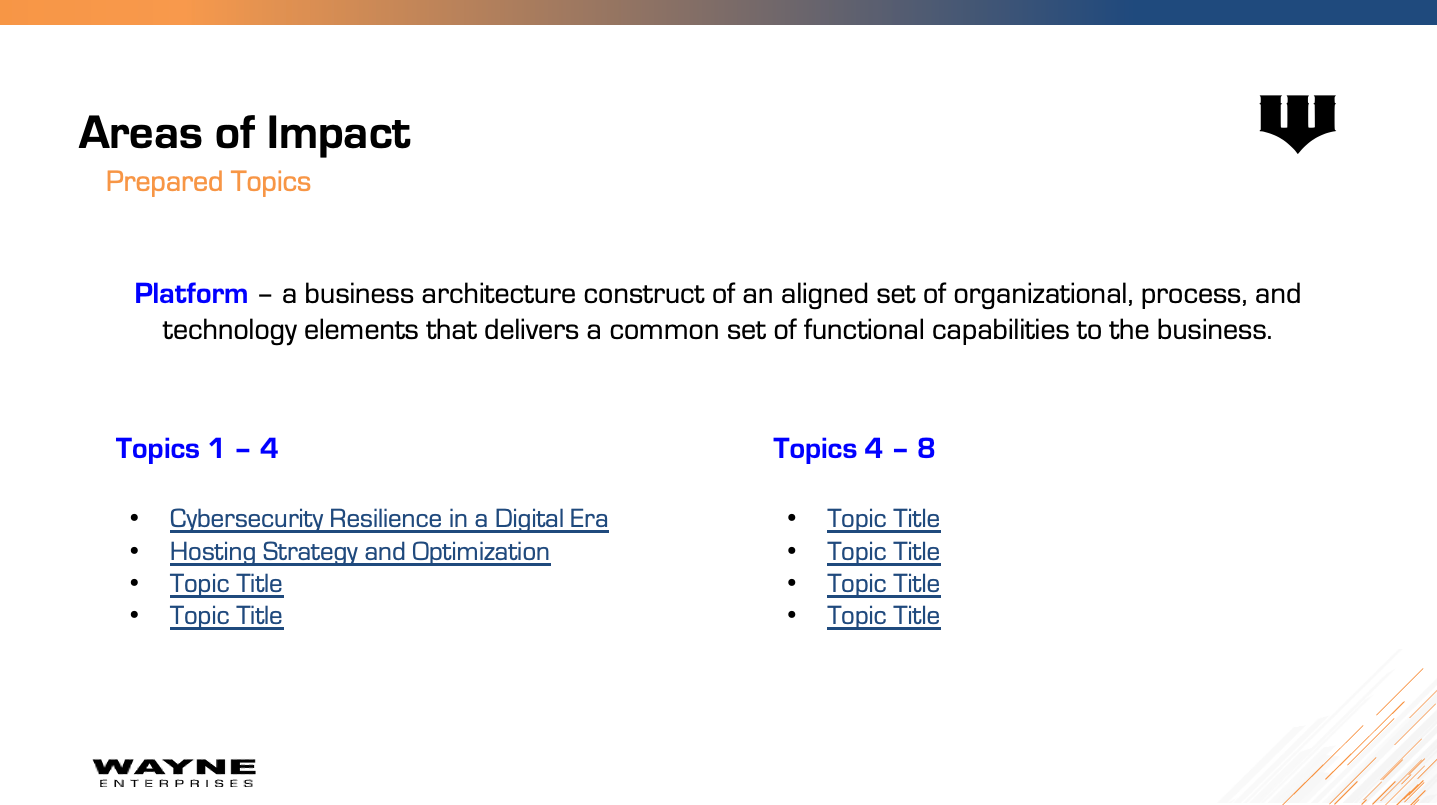
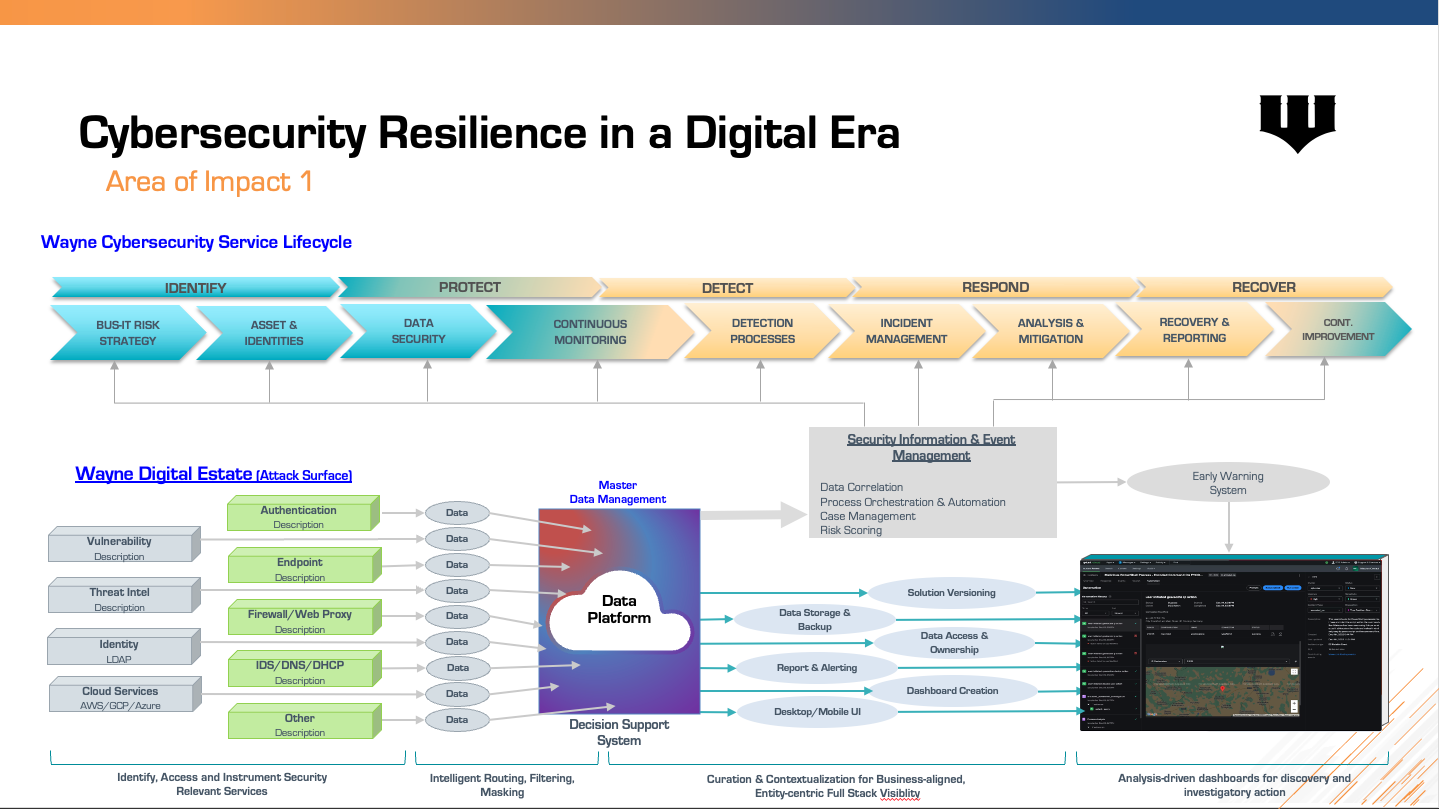
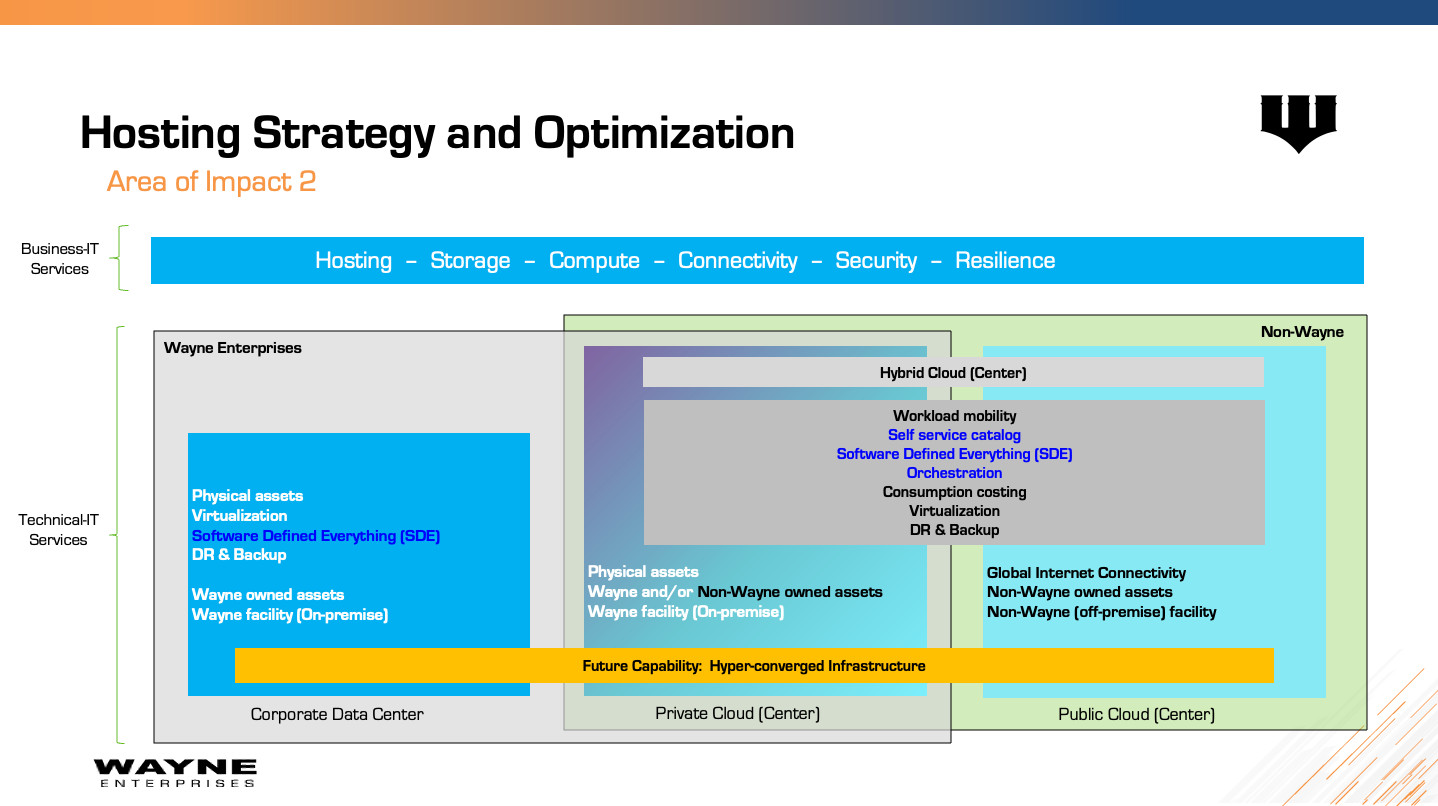
Challenges with this Approach: Once you start preparing and trying to align resources, you may hear the following: “Well, what does the customer want to hear about?” “They want us to tell them what good looks like relative to our domains of expertise,” is my response. This is typically met with, “Well, get them on the phone and find out so we can prepare.” This kind of resistance is a result of the uncertainty and absence of customer-provided context. You are talking to the wrong potential presenter if you get this response. You will know you have the right resource when they are so competent and experienced that their response is, “What do you want me to focus on?” followed by, “Sure, I have slides we can select from for that.” This is the individual you want to support you. If you can do a discovery to the point the customer knows what they want to hear, you are back to a qualified scenario, in which case you're back to exploring internal customer-specific use cases that speak to that precise outcome.
Concept Prototyping vs Customer-specific Use Case Selling
Concept prototyping originates from the disciplines of design thinking, product & service development, industrial and architectural design, and innovation methodologies. By merging these principles, concept prototyping in B2B technology sales becomes a tool for fostering collaboration, reducing ambiguity, and accelerating decision-making.
It involves creating a simplified, tangible representation of an idea, technology, or solution to demonstrate its potential value and functionality. As the vendor, this allows us to present ideas in a more concrete and relatable way, even before a fully developed conversation or implementation plan exists. It bridges the gap between abstract solutions and practical implementation, helping customers visualize the solution in their specific context.
Why It Works in Unqualified Meetings
Helps customers define their needs by visualizing possibilities they may not have considered.
Establishes our expertise in their domain by offering tailored, practical visions or ideas.
Encourages engagement and collaboration, transforming the meeting from a passive experience into a productive dialogue.
Concept prototyping is a powerful way to turn a complex or undefined problem into an opportunity for innovation and connection.
| Aspect | Concept Prototyping | Customer-Specific Use Case Presentation |
|---|---|---|
| Objective | Illustrate how the technology could work in a tailored or innovative way for the customer. | Showcase a proven application of the technology based on real or hypothetical customer scenarios. |
| Focus | Explores potential applications or new solutions, often in an experimental or exploratory way. | Emphasizes past success or relatable examples of how the solution was applied effectively. |
| Preparation | Involves creating a custom, simplified model or representation of the solution for the customer. | Requires knowledge of similar use cases, metrics, and customer challenges; may rely on existing case studies. |
| Interaction Level | Highly interactive; encourages feedback, collaboration, and iteration. | Primarily a presentation with opportunities for Q&A or discussion. |
| Customer Role | Active participant in evaluating or co-creating the proposed solution. | Passive listener with the chance to ask questions and draw parallels to their situation. |
| Visualization | Employs mockups, demos, interactive elements, or storyboards for a tangible demonstration. | Uses slides, case studies, metrics, and static visuals to communicate the value proposition. |
| Risk | Higher risk, as it involves presenting an idea that may require refinement or may not align perfectly. | Lower risk, as it relies on proven success or well-defined examples. |
| Creativity | Allows for innovation and creative exploration of what’s possible. | Focused on proven methods and specific outcomes relevant to the customer's industry. |
| Customer Benefit | Inspires new ideas and helps the customer clarify their needs and vision. | Builds confidence by demonstrating the solution’s relevance and success in similar scenarios. |
| Vendor Expertise Highlighted | Showcases innovation, adaptability, and ability to create customized solutions. | Demonstrates experience and knowledge of the customer’s industry and challenges. |
| Use Cases | When the customer is unclear about their needs or is exploring potential opportunities for innovation. | When the customer wants reassurance that your solution has worked for similar clients. |
| Outcome | Encourages the customer to visualize possibilities and align on specific goals. | Reassures the customer of the solution’s applicability and effectiveness. |
ChatGPT generated the above table based on my prompt, Dec 2024.
Summary
Use case selling is appropriate when we are selling into a situation where the customer already appreciates their problem or need (qualified by my definition). Thought leadership-driven selling is required when the customer, typically an executive stakeholder, is open to us helping influence their execution strategy (unqualified by my definition).
The Choose Your Own Adventure presentation structure offers flexibility and quick pivoting for audiences you don’t see every day. Supporting slides can always be included, but we often need to recognize that in these situations, the customer wants to understand what we believe to be effective. What is our orientation regarding how to align a particular technology with existing organizational processes? A great way to demonstrate this is by utilizing Concept Prototyping to create a Process-2-Platform Visualization that captures the Outcome Vision.
Many of us may not have the collective skill sets to do this effectively, but if you walk away from this article with an appreciation for a flexible presentation structure for an unqualified meeting, that is great. It’s also great if you come away with an appreciation for a new idea like Concept Prototyping and what it looks like in application. Even if you don’t use it yourself, you will be empowered to recognize it when you see it and draw on those resources to create the outcomes your customers are looking for.
In part 4, I will discuss how to decompose an Outcome Vision sequentially and logically, which allows you to discuss how your platform impacts each part of your customer’s process value chain.
Good Selling!
Disclosures:
This content is intended in the spirit of experiential knowledge sharing. I do my best to accurately describe strategies and techniques I use in the field for creating great customer interactions but I am not responsible for their use or misuse nor the outcomes that result from either.
I use GrammerlyAI to: 1) proofread for spelling & correctness 2) make changes/updates to grammar, sentence structure, etc. to improve clarity and readability and 3) ensure my writing is absent of any plagiarism
© 2024 S2A Consulting LLC. All rights reserved. This content may not be reproduced, distributed, or transmitted without prior written permission.

